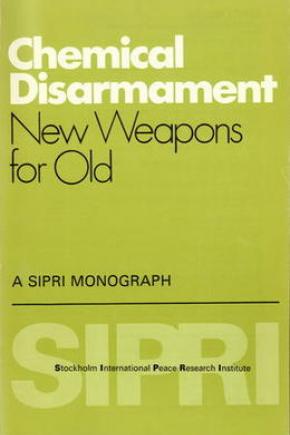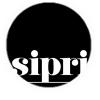Chemical Disarmament: New Weapons for Old

For the past seven years, chemical disarmament has been a subject of intense discussion at the Conference of the Committee on Disarmament (CCD) in Geneva, but despite these efforts, no international agreement has yet been reached. Indeed, since the conclusion of the convention on the prohibition of the development, production and stockpiling of biological and toxin weapons and on their destruction, which was opened for signature in April 1972, there has been very little progress towards the conclusion of a similar treaty on chemical weapons.
This book examines in detail two issues that are currently receiving considerable attention in the chemical disarmament debate: the dangers posed by the possible introduction of a new generation of chemical weapons—the binary nerve-gas weapons—and the technical and verification aspects of the destruction of existing stockpiles of chemical weapons. It is feared that as a result of recent progress in military chemical technology, the 'old' chemical weapons may simply be replaced by 'new' ones. And in such a situation, the difficulties at the chemical disarmament negotiations could further increase.
1. Chemical disarmament negotiations in 1974
J. Goldblat
Appendix 1A. Draft convention on the prohibition of the development, production and stockpiling of chemical weapons and on their destruction, submitted by Japan to the CCD on 30 April 1974
Appendix 1B. UN General Assembly resolution on chemical and bacteriological (biological) weapons, 9 December 1974
2. Binary nerve-gas weapons
J. Perry Robinson
Appendix 2A. The size of the US-nerve gas stockpiles
Appendix 2B. US nerve-gas weapons
Appendix 2C. Preparative routes to nerve gas, and the binary concept
3. CW stockpiles
Appendix 3A. Working paper on chemical agent destruction, submitted by the United States of America to the CCD on 16 July 1974
Appendix 3B. Destruction and disposal of Canadian stocks of World War II mustard agent, submitted by Canada to the CCD on 16 July 1974
4. Report from the Pugwash Chemical Warfare Workshop, held in Helsinki, Finland, on 16–18 April 1974
Annex 1. Time lag between discovery of candidate CW agents and their appearance in military arsenals
R. B. Fisher
Annex 2. On a balanced treaty structure
J. Prawitz
Annex 3. Security limitations of chemical deterrence
J. Perry Robinson
Annex I. Protocol for the prohibition of the use in war of asphyxiating, poisonous or other gases, and of bacteriological methods of warfare (the Geneva Protocol), of 17 June 1925
Annex II. List of states which have signed, ratified, acceded or succeeded to the Geneva Protocol of 17 June 1925, for the prohibition of the use in war of asphyxiating, poisonous or other gases, and of bacteriological methods of warfare, as of 31 December 1974
